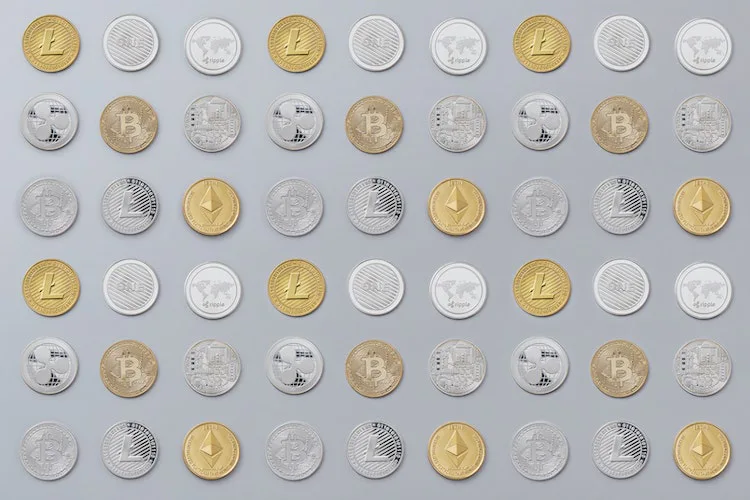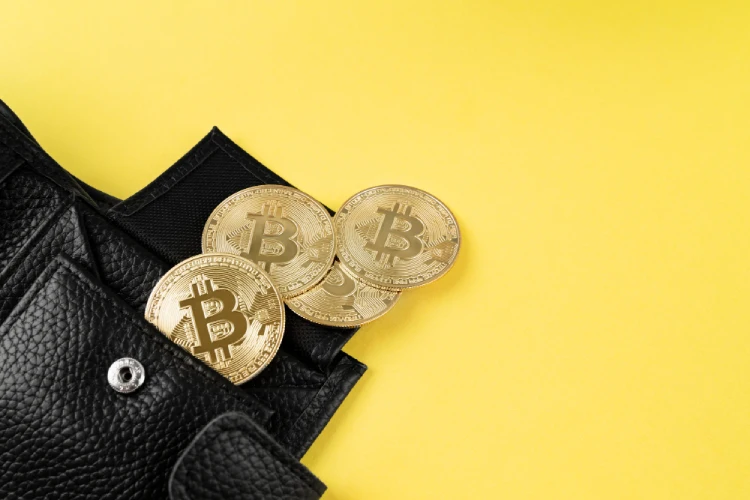Bitcoin has revolutionized the world of finance as the first-ever decentralized cryptocurrency built on a peer-to-peer network. Its success has spurred the creation of numerous other digital currencies, with Bitcoin serving as the industry’s benchmark. However, investors should keep their options open and consider other cryptocurrencies besides Bitcoin. Despite the market’s volatility, some cryptocurrencies have persevered through steep price fluctuations, indicating their viability as long-term investments. Let’s take a look at a few such cryptocurrencies.
What Are Cryptocurrencies?
Cryptocurrencies have taken the world by storm since Bitcoin’s introduction in 2009, but what exactly are they? In simple terms, cryptocurrencies are virtual or digital money that exists in the form of tokens or “coins.” They rely on complex cryptography to create and process digital currencies and transactions across decentralized systems. Cryptocurrencies are typically developed by teams who build in mechanisms for issuance and other controls, with a common commitment to decentralization.
One of the most significant features of cryptocurrencies is their decentralization, which means they are designed to be free from government manipulation and control. However, as the industry has grown more popular, this aspect has come under scrutiny. Despite this, the use of cryptocurrencies continues to gain traction, and more people are considering investing in them.
While Bitcoin remains the most popular cryptocurrency, there are numerous other options available, collectively known as altcoins. These currencies may have some impressive features that Bitcoin does not, but they still struggle to match the level of security that Bitcoin’s networks achieve. Nonetheless, many people are turning to altcoins as an alternative investment to Bitcoin.
1. Ethereum (ETH)
Price: $1,863
Market cap: $224 billion
Unlike Bitcoin, Ethereum is more than just a digital currency. It’s a decentralized platform that allows developers to build and run decentralized applications (dApps) and smart contracts without any interference from a third party. This means that transactions can be processed quickly and efficiently, without any downtime or risk of fraud.
But Ethereum isn’t just for developers. Its goal is to create a suite of financial products that anyone in the world can access, regardless of nationality or ethnicity. This is particularly important in countries with limited state infrastructure, where people may not have access to bank accounts, loans, or insurance. With Ethereum, they can access these services without needing state identification.
So how does Ethereum work? The platform uses ether (ETH), a cryptocurrency that’s used to power transactions and pay for dApp usage. Ether was launched in 2015 and has since become the second-largest digital currency by market capitalization. It’s particularly popular with developers looking to build and run dApps on the Ethereum platform.
But ether isn’t just for developers. Investors are now using it to purchase other digital currencies, making it a popular choice in the world of cryptocurrency. However, it still lags behind Bitcoin in terms of market capitalization, with a current market cap of $224 billion compared to Bitcoin’s $550 billion.
2. Tether (USDT)
Price: $1.00
Market cap: $80 billion
The problem with Bitcoin and other cryptocurrencies is that they are volatile, which can be problematic for people who want to use them for transactions that’s where stablecoins like Tether (USDT) came in, which aims to provide a more stable alternative to the usual volatility of cryptocurrencies.
Tether was one of the first and most popular stablecoins. It aims to peg its market value to a currency or other external reference point, in this case, the US dollar, to reduce volatility. This feature is important because the majority of digital currencies, including Bitcoin, are subject to frequent periods of dramatic volatility. Tether and other stablecoins aim to smooth out price fluctuations to attract users who may be cautious about using cryptocurrencies due to their volatility.
Tether’s price is tied directly to the price of the US dollar, making it easier for users to make transfers from other cryptocurrencies back to US dollars in a more timely manner. The system allows individuals to utilize a blockchain network and related technologies to transact in traditional currencies while minimizing the volatility and complexity often associated with digital currencies.
Launched in 2014, Tether describes itself as “a blockchain-enabled platform…to make it easier to use fiat currency digitally.” In effect, this cryptocurrency allows individuals to transact in traditional currencies on a blockchain network while minimizing the volatility and complexity often associated with digital currencies.
3. Binance Coin (BNB)
Price: $312.40
Market cap: $49 billion
Those who use BNB to pay for exchange fees get to trade at a discount. The blockchain that powers BNB is also the foundation for Binance’s decentralized exchange, which was founded by Changpeng Zhao and is a popular choice for traders around the globe. It’s clear that Binance Coin is one to watch in the ever-evolving world of cryptocurrency.
4. USD Coin (USDC)
Price: $0.9999
Market cap: $32 billion
USD Coin, was created in 2018 by the Centre Consortium, a partnership between Circle and Coinbase. USD Coin’s value is backed by fiat-collateralized reserves, meaning that for every USD Coin in circulation, there is an equivalent amount of fiat currency held in reserve. Since Circle is based in the U.S., USD Coin is considered a regulated stablecoin.
5. XRP
Price: $0.5052
Market cap: $26 billion
XRP is a digital token that serves as the native currency for the XRP Ledger, which was created by Ripple in 2012. The XRP Ledger is designed as a payment system that uses a unique consensus mechanism called the XRP Ledger Consensus Protocol. This protocol differs from the traditional proof-of-work or proof-of-stake mechanisms used in other cryptocurrencies.
So how does the XRP Ledger Consensus Protocol work? Instead of mining or staking, client applications sign and send transactions to the ledger servers. These servers then compare the transactions and determine which ones are eligible to be entered into the ledger. The transaction candidates are then sent to validators, who work to verify that the servers got the transactions right and record the ledger version.
What makes the XRP Ledger Consensus Protocol so unique is that it allows for extremely fast and inexpensive transactions. Unlike other cryptocurrencies that can take minutes or even hours to process transactions, XRP transactions are processed in mere seconds. This makes it an attractive option for businesses and individuals who need to move money quickly and efficiently.
In addition to its speed and efficiency, XRP is also a highly secure and decentralized cryptocurrency. Because the XRP Ledger doesn’t rely on mining or staking, it’s not vulnerable to attacks from malicious actors who might try to take control of the network. This makes XRP a reliable and trustworthy option for anyone looking to use cryptocurrency for their financial transactions.
6. Cardano (ADA)
Price: $0.3887
Market cap: $14 billion
Cardano was created with a research-based approach by a team of engineers, mathematicians, and cryptography experts. The project was co-founded by Charles Hoskinson, who was one of the original founders of Ethereum. However, after disagreeing with the direction Ethereum was taking, he left to create Cardano.
What sets Cardano apart from other cryptocurrencies is its rigorous process in creating its blockchain. The team behind Cardano conducted extensive experimentation and peer-reviewed research, resulting in over 120 papers on blockchain technology across various topics. This research is the backbone of Cardano, making it a standout among its peers.
Cardano has been called an “Ethereum killer” due to its blockchain’s supposed ability to do more. While it has beaten Ethereum to the PoS consensus model, it still has a long way to go regarding DeFi applications. However, Cardano aims to be the world’s financial operating system by establishing DeFi products similar to Ethereum’s and providing solutions for chain interoperability, voter fraud, and legal contract tracing, among other things.
7. Dogecoin (DOGE)
Price: $0.08296
Market cap: $12 billion
Dogecoin, known as the original “memecoin,” gained a lot of attention in 2021 as its value soared. This cryptocurrency features an adorable Shiba Inu dog as its mascot and is even accepted as a form of payment by some big companies.
But did you know that Dogecoin was created as a joke? It’s true! Back in 2013, two software engineers named Billy Markus and Jackson Palmer came up with the idea as a humorous commentary on the speculation frenzy that was sweeping the crypto market. Little did they know that their creation would become a major player in the world of digital currencies.
Whether you view it as a fun meme or a serious investment opportunity, there’s no denying that Dogecoin has captured the imagination of people around the world. Its rise to fame is a testament to the power of community and the unpredictable nature of the crypto market.
8. Solana (SOL)
Price: $20.26
Market cap: $8 billion
Solana was created in 2017. It can process significantly more transactions per second and charges lower transaction fees. This makes it a better choice for those who want to run cutting-edge applications such as decentralized finance (DeFi) and non-fungible tokens (NFTs). Both Solana and Ethereum use smart contracts, which are essential for these applications to function.
9. Binance USD (BUSD)
Price: $0.9998
Market cap: $7 billion
This digital currency was developed by Binance, one of the world’s biggest cryptocurrency exchanges, with the aim of creating a stablecoin that’s pegged to the US dollar. What makes Binance USD different from other stablecoins is that it’s regulated by the New York State Department of Financial Services, giving investors added peace of mind.
10. Polkadot
Price: $6.16
Market cap: $7 billion
Polkadot (DOT) is a cryptocurrency that has been designed to bring about interoperability between different blockchains. This means that it allows both permissioned and permissionless blockchains to connect and work together seamlessly. Its protocol is unique and is aimed at creating a single platform where different systems can come together to achieve a common goal. Polkadot’s relay chain is the core component that enables the interoperability of various networks. Additionally, it provides for parachains, which are parallel blockchains that have their own native tokens for specific use-cases.
What sets Polkadot apart from Ethereum is its approach to blockchain creation. While developers can create new blockchains on both platforms, Polkadot allows them to leverage the security of the main chain. In contrast, Ethereum requires developers to create their own security measures, which can leave smaller projects vulnerable to attacks. This concept is referred to as shared security in Polkadot.
The ability to create new blockchains while benefiting from the security of the main chain has significant advantages. For instance, developers can create customized blockchains with specific use-cases that are not possible on existing chains. Polkadot also allows developers to upgrade their chains without breaking the main chain. These features make Polkadot an ideal platform for developers who seek to create innovative blockchain solutions.

 The Different Kinds Of Bitcoin Wallets Available
The Different Kinds Of Bitcoin Wallets Available